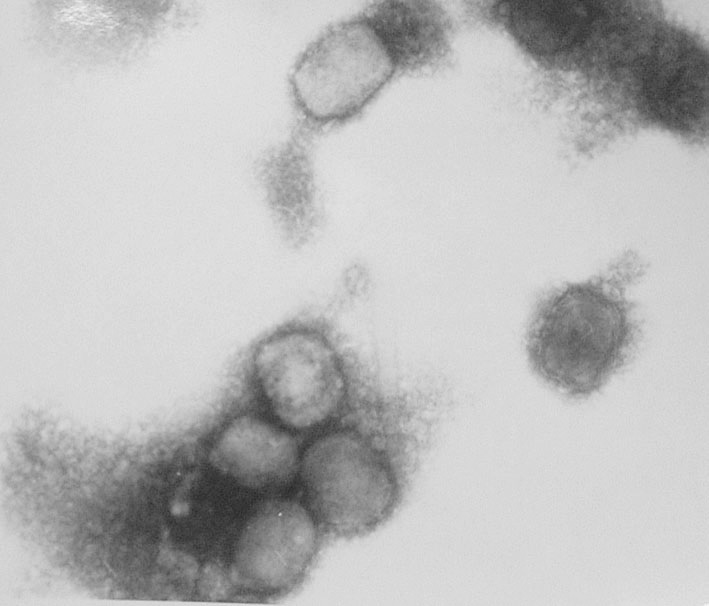FAQ on Mpox virus (MPXV)
1 What is Mpox?
Mpox is a disease caused by the orthopoxvirus simiae (also Mpox virus, MPXV) from the genus Orthopoxvirus. These viruses occur naturally in rodents. Monkeys are considered to be false hosts: the virus cannot develop further in them or reach a final host from there.
Humans can become infected with infected animals (zoonosis) if they come into contact with their pustules, bodily secretions or contaminated material: through bites, close contact, during hunting or when processing insufficiently heated meat.
Human-to-human transmission also occurs through body secretions, such as when touching skin lesions, blisters, pustules, skin crusts, typically during prolonged, close contact, such as during sexual intercourse.
Mpox virus is related to the classical human poxviruses (variola virus, smallpox) and the cowpox viruses, which are also known to be zoonotic.


2 What happens if I become infected and how can I protect myself?
In humans, the Mpox virus usually causes a mild illness with fever and smallpox-like skin symptoms. Severe courses of the disease are rare, but possible, especially in people with underlying health conditions.
Infected people are contagious as soon as and as long as they have symptoms (according to the Robert-Koch-Institute (RKI) usually for two to four weeks). People who are in close contact with an infectious person, such as sexual partners and household members, possibly health care professionals, are therefore at a higher risk of infection and can be contact persons.
Vaccination against true smallpox reduces the risk of the disease breaking out or mitigates the course of the disease. The Ständige Impfkommission (STIKO) recommends vaccination with the smallpox vaccine Imvanex for certain groups of people.
People diagnosed with Mpox infection must stay in domestic isolation, possible contacts in quarantine. Those living in the same household should keep a distance of 1.5 metres, wear an FFP2 mask and refrain from physical contact such as shaking hands, hugging or having sex. Condoms do not protect against transmission of the virus.
The World Health Organisation (WHO) is calling on people to raise awareness of Mpox - regardless of gender and sexual orientation or activity.
3 What are the symptoms of Mpox?
The incubation period of Mpox is 5 to 21 days. The first symptoms are fever, aching limbs and swollen lymph nodes. The blisters and pustules that then appear are concentrated on the face, palms and soles. The symptoms last for two to four weeks and can often disappear on their own without treatment. In some cases, skin changes in the urogenital and anal areas have been reported. In endemic areas (West and Central Africa), meningitis has been reported as a complication. There are only few data on the course in immunocompromised patients.
4 What treatment is available?
Mpox infection heals on its own, most people recover within several weeks. Therapy only treats the symptoms. It is important to prevent bacterial superinfections from occurring.
A drug developed for the treatment of orthopox virus infections was recently also approved in the EU for the treatment of Mpox (Tecovirimat). The Ständige Arbeitskreis der Kompetenz- und Behandlungszentren für Krankheiten durch hochpathogene Erreger (STAKOB) provides advice on the treatment of Mpox and is available for consultation on clinical management and therapy.
Contact
- Prof. Dr Stephan Günther
- Head of Department of Virology
- phone: +49 40 285380-547
- fax: +49 40 285380-459
- email: guenther@bnitm.de
- Dr Anna Hein
- Public Relations
- phone: +49 40 285380-269
- email: presse@bnitm.de
- Julia Rauner
- Public Relations
- phone: +49 40 285380-264
- email: presse@bnitm.de
- Central Laboratory Diagnostics and Medical Care Center
- Consultation for doctors only!
- phone: +49 40 285380-0
- fax: +49 40 285380-252
- email: labordiagnostik@bnitm.de







